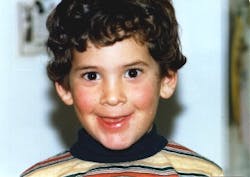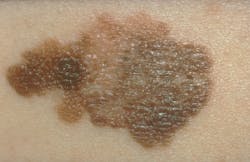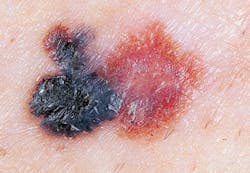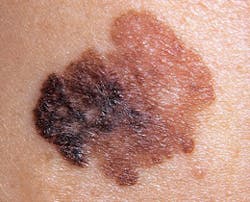“Daniel, my brother, you are older than me, Do you still feel the pain of the scars that won’t heal? Your eyes have died, but you see more than I, Daniel, you’re a star in the face of the sky.”—Bernie Taupin and Elton John
These are words from the song “Daniel.” It was written in 1972, the year Daniel Fine was born. It was played at Daniel’s funeral 26 years later.
Daniel’s mother, Gail Sandler Fine, is a dental hygienist who practiced for 51 years, first as a school hygienist and then in private practice before retiring in 2017. Daniel’s father, Stephen Fine, taught organic chemistry at Lafayette College before entering the industrial world in 1974. Daniel was the oldest of three children.
More by the author:
Daniel had a nurturing and giving spirit right from the start. At three years old, he comforted his grandmother when his grandfather died. As a high school student, he used his savings from his paper route to visit China as a representative in the People to People Student Ambassador Program so he could reach out to people with whom he had never met. As a young adult, he paid for a Russian child to attend summer camp. As a camp counselor, Dan “listened to everyone’s stories no matter how irrelevant and showed every kid the attention they deserved,” according to one former camper. In the early months of his illness, Dan came to his parents with a smile one morning and thanked them for giving him life.
Late in the night of October 9, 1998, Dan called his parents into his room. Somehow he had mustered the strength to sit up on the side of his bed. As Gail and Steve Fine sat at their son’s side, he put an arm around each of them and said, “I love you both.” Daniel died early the next morning.
Melanoma: the most serious type of skin cancer
Melanoma derives its name from melanotic, having black pigmentation, and oma, denoting a tumor.1 It develops in melanocytes, the cells that produce melanin. While most commonly found on the skin, it can also form in the eyes, nose, and mouth. Melanoma can occur anywhere on the body, although the places most at risk are areas that have been exposed to ultraviolet (UV) radiation. Melanoma that occurs in places not regularly exposed to the sun, such as the soles of the feet, is more common in darker-skinned people.2 While cancer of the skin is the most common cancer, melanoma accounts for only 1% of all skin cancers. However, it is the deadliest type of skin cancer.3
According to the American Cancer Society, in 2021, “about 106,110 new melanomas will be diagnosed (about 62,260 in men and 43,850 in women)” and “about 7,180 people are expected to die of melanoma (about 4,600 men and 2,580 women).”3
The risk of getting melanoma is highest in white males, followed by white females. There appears to be an increasing risk in people under 40, especially women, possibly due to the increased exposure to UV radiation from tanning lamps and beds.2,4 However, melanomas can occur in anyone at any age.
Warning signs of melanoma
If only he had known...
Daniel Fine had a dark complexion and tanned easily. He had the mole as a child, though not at birth. He first noticed a change in the mole (slight bleeding) about four or five months prior to when his father noticed it, but attributed it to irritation from the rough fabric of a new computer chair he had bought. That tragic assumption and the location of the mole resulted in his subsequent inattention. Most likely, it had undergone other changes before it began to bleed, but he didn’t notice because itThe Melanoma Education Foundation
Gail and Steve Fine suffered the worst tragedy a parent can face: the death of a child. Their greatest desire is that no other parent should ever suffer as they did due to this terrible disease. Melanoma is easy to detect in its early stage when it is easy to cure through simple out-patient excision. However, if it is not caught in its early stage, it becomes one of the most malignant and incurable of all cancers.
The Melanoma Education Foundation is a nonprofit preventive health organization that saves lives by promoting greater awareness of melanoma and the importance of early self-detection. It was started by Dan’s father, Steve, as a website tribute to his son, and was incorporated as a nonprofit 501(c)(3) organization in 2000. Its goal is to create a melanoma-free world through education. Its mission is to inspire people to implement lifelong habits for self-detection and prevention of skin cancer.
The risk of melanoma increases dramatically in the mid-20s age group. The Melanoma Education Foundation provides education on melanoma prevention to middle and high schools, to reach students early on so they will know how to self-detect skin cancers. This curriculum is available free to any middle or high school that requests it. There is a wealth of information for school health educators on the Melanoma Education Foundation website (melanomaeducation.net) including videos, lesson plans, and classroom materials. Steve Fine can also be contacted directly via email at [email protected].
There is also a website for the general public (skincheck.org) that has comprehensive, user-friendly information concerning early self-detection and prevention, as well as ways that people can contribute or get involved. A new 30-minute video, “Early self-detection and prevention of melanoma,” is accessible at the top of the website page.
What can dental hygienists do?
You may be wondering, “How does this apply to me as a dental hygienist? Skin cancer has nothing to do with the mouth.” The answer is simple: Dental hygienists are prevention specialists. We have long ago realized that prevention does not apply only to caries and periodontal disease. We know that a healthy mouth contributes to systemic health. Taking that thought one step further, if we can help prevent a deadly disease that may have nothing to do with the mouth, shouldn’t we do that as well?
As hygienists, we are in a perfect position to point out suspicious skin lesions to our patients. We sit inches away from them to do our work. We can’t help but notice lesions on their faces or arms. They already trust us with their oral health, so they are not likely to be offended by our showing concern over a potentially serious skin lesion.
But many of us may feel hesitant to say anything to our patients. We may be afraid of embarrassing them by pointing out a physical “flaw,” or we may think they will be offended by our stepping outside of our field of expertise. And truthfully, some patients may react negatively.
The alternative is to say nothing. If that lesion you noticed was indeed melanoma, and you kept silent, how would you feel if you subsequently learned the patient had died of something you may have been able to prevent by encouraging him or her to see a dermatologist? Possibly saving a life is worth the risk of being made uncomfortable or making a patient uncomfortable.
Daniel Fine faced his illness with extraordinary courage and dignity, never complaining or expressing anger or asking, “Why me?” But nobody should have to endure what Dan and his family endured. Dental hygienists can help the Melanoma Education Foundation reach its goal of creating a melanoma-free world through education. If you see a suspicious lesion, say something. You may be saving a life.
Author’s note: I would like to thank Gail Sandler Fine, BS, RDH, and Stephen Fine, PhD, for their invaluable assistance in writing this article, and for sharing the story of their son Daniel Noah Fine, so that lives will be saved and others will never suffer the heartbreak that they experienced.
References
- Definition of melanoma. Merriam-Webster. https://www.merriam-webster.com/dictionary/melanoma
- Melanoma. Mayo Clinic. March 10, 2020. https://www.mayoclinic.org/diseases-conditions/melanoma/symptoms-causes/syc-20374884
- Key statistics for melanoma skin cancer. American Cancer Society. Updated January 12, 2021. https://www.cancer.org/cancer/melanoma-skin-cancer/about/key-statistics.html
- About melanoma: Who is at risk? Melanoma Education Foundation. https://www.skincheck.org/Page3.php
- Finding melanoma early: Warning signs and photos. Melanoma Education Foundation. https://www.skincheck.org/Page4.php
About the Author
Kirsten Brancheau, BA, RDH
Kirsten Brancheau, BA, RDH, practiced clinical dental hygiene from 1978 until her retirement in 2025. She continues to work occasionally as a temp. Kirsten earned an associate’s degree in applied science in dental hygiene from Union County College and a bachelor of arts degree in English literature from Montclair State University. She is a member of the American Dental Hygienists’ Association. Kirsten is also a freelance proofreader, editor, and writer. She can be reached at [email protected].







